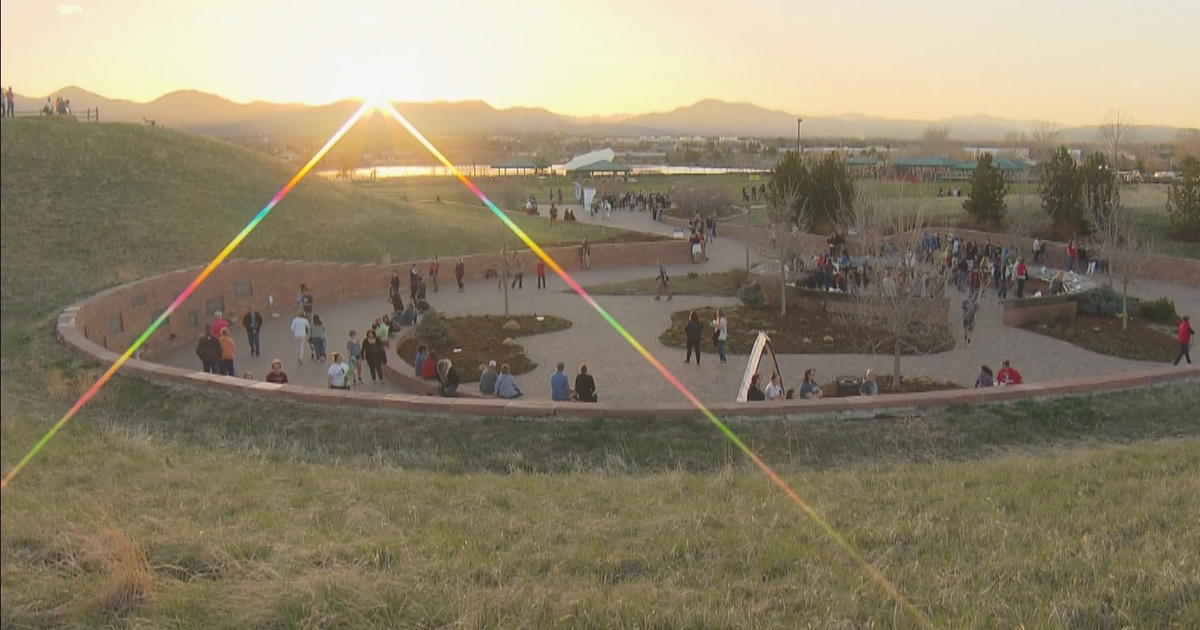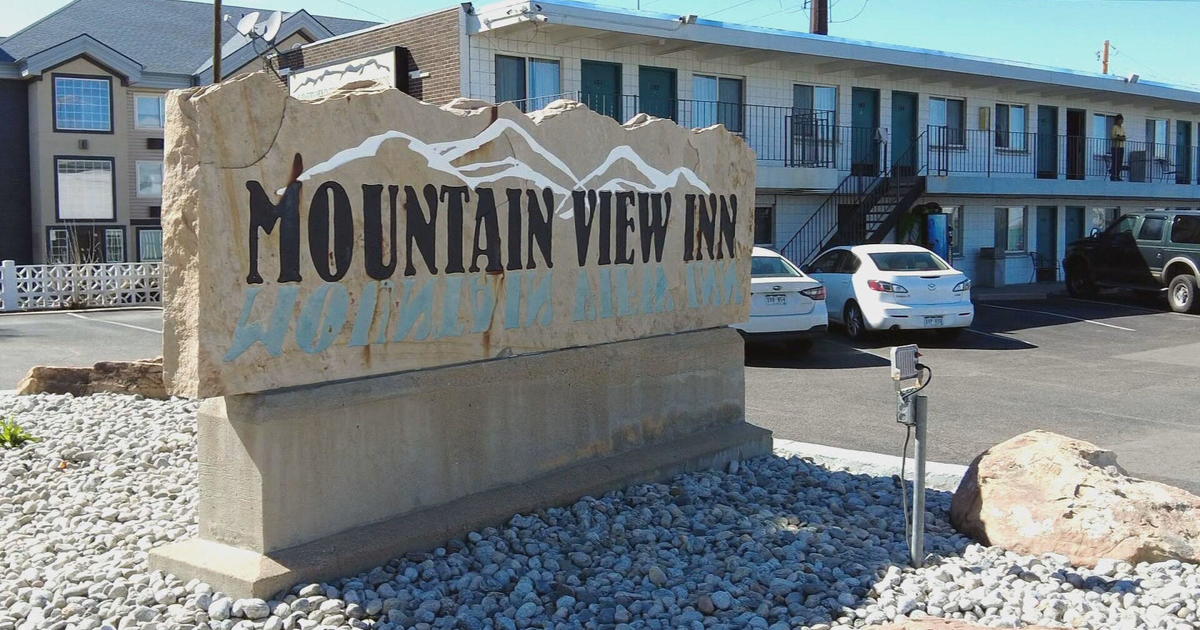Boulder County Ranchers Feel Pinch Of Hay Prices
BOULDER, Colo. (AP) - Three years ago, Boulder County rancher Bill Berg was yielding about 1,000 bales of hay from his fields.
It was plenty for him to feed his small, but growing, herd of cattle and plenty for him to sell for $4 to $4.50 a bale.
Last year, Berg was lucky to pull 450 bales from his land - 9 acres of which had turned into a "dust bowl."
Not having enough to feed his 12 head of cattle for his Ridge Ranch Cattle Co. grass-fed beef business, Berg shelled out anywhere from $10.50 to $14 a bale to buy more.
That was if he could find the hay.
The nationwide drought coupled with the fires in Colorado, Texas and Oklahoma over the past few years is hampering the nation's hay industry, putting increased pressure financially on area ranchers, businesses and nonprofit groups that rely on finding high-quality feed for their horses and steers.
"The hay is worth more than my cows right now," Berg said.
The tightness in the industry also has forced some ranchers to give up their livestock and resulted in the creation of a black market for hay.
During the past year, thieves hit a smattering of Boulder County farms - including the nonprofit Rocky Mountain Riding Therapy - and ran off with hundreds of bales.
Some local ranchers say they're doing their best to weather the short-term woes, hoping that a wet spring could turn their fortunes around.
"We need to get some rain or some snow this year or everybody's going to be in trouble," said Gina Elliott, co-owner of the Boulder-based Colorado's Best Beef company.
As of Jan. 31, large squares of supreme quality alfalfa grown in northeastern Colorado carried a value of $250 to $270 per ton, according to the latest Colorado Hay Report from the state arm of the U.S. Department of Agriculture's Agricultural Marketing Service.
This time in 2010, those prices ranged from $110 to $120 per ton.
The wildfires that raged throughout Colorado last summer put added pressure on the state's overall forage supply, said Tess Norvell, market reporter for the state AMS bureau.
"Not only did the fires burn available grazing lands, but have also created added demand for straw to go back on the burn areas for reclamation," she wrote in an email to the Daily Camera. "Add the fires to light yields and the fact that Colorado was already operating on limited carry-over of hay from the previous year (as a lot of Colorado hay was shipped to Texas in 2011 to assist their forage needs during the Southern drought last year) and our supplies are really down this year."
Concurrently, demand also has softened somewhat, she said. Some of the contributing factors include: a mild winter, producers selling calves earlier than normal, producers culling deeper into their herds and others growing more cash-strapped.
If the dry spate continues, there is a chance that prices could climb higher, she said.
The current weather conditions are expected to continue, said Matt Kelsch, meteorologist for the University Corporation for Atmospheric Research in Boulder.
"Patterns can change, but right now there's not expected to be any major changes throughout this spring," he said, noting the global circulations are trending toward a drier La Nina event. "There's some confidence that we're not going to have an exceptionally moist spring."
Judy Smetana, executive director of the Longmont-based Colorado Horse Rescue, said one of her biggest concerns is if the latest drought continues, mimicking what the United States experienced in the 1930s and 1950s.
"Right now I'm conservatively hopeful just because I don't want to be totally not hopeful and then worry myself to death," she said. "I'm worried, that's for sure."
Inquiries to the organization from people seeking to surrender their horses have "for sure, doubled and almost tripled," she said. Colorado Horse Rescue also has 55 horses on site, leaving only five spaces open.
In addition to the continued rising cost of feed - which can put further crimps in an already tight operating budget - Smetana said her biggest concern is that horses will face neglect or be sold to slaughterhouses.
"We went through last year and we made it, and we might be able to make it barely this year," she said. "If it continues, I just really worry.
"We have neither the capacity nor funds to help everybody that might need help going into the future, which is scary."
The combination of drought and wildfires in Colorado, Texas and Oklahoma during the past two years helped to cripple hay supplies, bringing prices for the field crops to record levels in Colorado.
Anticipating the worst, Brian Ferris, a Fort Morgan cattle rancher whose family partnered with the Elliotts on Colorado's Best Beef, bought his hay early to save on the cost. What he landed for $190 a ton now is carrying a price tag of $275 a ton.
"Drought-wise, it's very comparable to (the early 2000s)," Ferris said. "The problem thus far is that the Texas and Oklahoma drought cleared out all the feed for miles and miles and miles. So when it's our turn, there's no residual feed left."
The supply he has on hand should be enough to get his herd of 250 cattle through the spring, he said.
How things fare from there will depend heavily on the weather.
"If we do not get spring moisture, we're in a great deal of trouble," he said. "I liken it to a poker game where everybody's all-in."
If his operation and business do survive, Ferris expects numbers will be lower. His herd already is down 25 percent from the year before and some further downsizing could occur.
Brothers Babe and Leo Hogan, fourth-generation cattle ranchers who oversee thousands of acres of land in Boulder County, grow hay solely for their livestock.
"It's sure short," Babe Hogan said of the past year's yield, which was 50 percent off the year before.
And although the Hogans' hay isn't for sale, that hasn't stopped the number of house calls from people wanting to buy bales from continuing to climb.
Being a small operator, Ridge Ranch Cattle Co.'s Bill Berg knows he does not have much flexibility when it comes to his herd.
He has about two months of hay and about four months of feeding left.
He's doing his best to keep his supplier contacts warm, making sure he's high on the list when hay becomes available. Come spring, he also will be looking out of state for supply.
The weather, the prices and availability of feed have turned cattle ranching into a chess game.
"It's changing the way you look at how to produce beef, what you want to keep," he said. "Whether you like your cows or not doesn't much matter anymore."
Berg said he might be forced to sell his oldest cow and youngest calf or possibly send his heifers to slaughter.
"I really don't want to butcher my females," he said. "It might come to that."
The pricey hay has created additional worries for local ranchers: Since last year, hay bales have been targeted by thieves.
Rocky Mountain Riding Therapy, a Boulder-based nonprofit therapeutic horseback riding program, had 50 bales stolen from its barn last year and in recent weeks saw 80 more disappear.
Thieves targeted other farms as well, taking hundreds of bales at a time.
"When we got hit, I said to myself, 'Maybe they just need it (to feed their own animals),' to make it feel better, but when you take 400 bales?" she said. "...It's not right to steal from anyone, but stealing from a nonprofit group?"
The organization this year budgeted $15,000 for hay. In previous years, the high-quality feed for the nearly dozen horses on site cost $7,000 to $8,000, said Carrie Kass, volunteer barn manager for the program.
"When it's cold you have to feed more hay to help the horses stay warm; it's a balancing act of ordering what you need," she said. "If I need to replace those 50 bales of hay, it's not going to be inexpensive."
Kass contacted the Boulder County Sheriff's Office about the thefts, but no arrests have come just yet.
Detective Don Dillard said he had a suspect in sight last year, a man whose license plate was left in one of the fields, but there was not enough evidence to warrant an arrest.
"Once that magic number hit - that $10 (a bale) number - that's when, realistically, you have just a lot of money ultimately sitting in these open fields," Dillard said.
Sheriff's deputies have stepped up patrols in the area and also are recommending ranchers take precautions such as installing gates or security cameras.
Berg, of Ridge Ranch, said he has not faced the additional agony of theft.
"We've got two hay storage areas, both covered and one shed is right in the middle of the property," he said. "...The gate is locked and we're armed."
- By ALICIA WALLACE, Daily Camera
(© Copyright 2013 The Associated Press. All Rights Reserved. This material may not be published, broadcast, rewritten or redistributed.)



